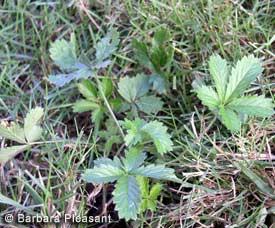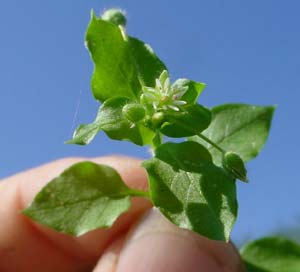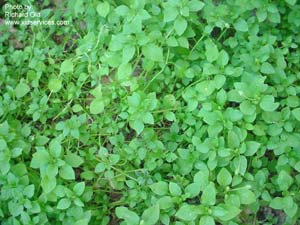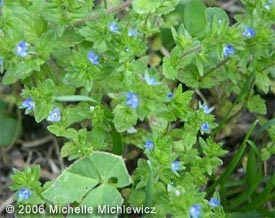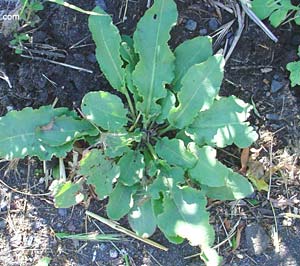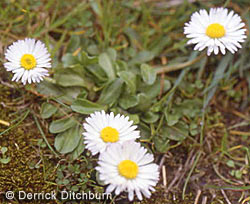Carpetweed

Carpetweed (Mollugo verticillata) is an expert at colonizing moist places where shrubs, trees, and the lawn come together. Seeds germinate in late spring, and warm weather brings a rush of long, sticky stems studded with whorls of three to six leaves and small starry white flowers. Stems stay low to the ground in sun but may form 12-inch-tall mats in shade. Pull young plants, or use a sharp knife to slice them off at the soil line. Mulch to discourage carpetweed in beds and edgings. In lawns this weed is gradually crowded out by thick, healthy turf.
Weed Control Techniques
Pulling. Most young weeds can be pulled from the soil. They will slide out most easily if you pull them when the soil is wet. Getting the root up is crucial, so think of the main stem as the root's handle, and grasp it as close to the soil line as you can. If you find that the weeds are breaking off at the crown as you pull, slip a kitchen fork, dandelion weeder, or similar tool under the weed, and pry and twist as you pull it up. Weeds that have taproots, such as dandelion and plantain, usually must be pried out. A flexible pair of waterproof gloves will keep your hands comfortable as you weed, and it's good to have a nice sitting pad, too. Let pulled weeds bake in the sun for a day or so before composting them. If pulled weeds are holding mature seeds, compost them separately in a hot, moist pile before using this compost in the garden.
Mulching. Mulch that's more than 2 inches thick can deprive most weed seeds of the light they need to germinate and grow. In vegetable and flower gardens, you can Mulch with wheat straw (which has fewer weed seeds than hay), chopped leaves, grass clippings, or many other organic materials. Where weeds are numerous, try covering the soil with four to six sheets of newspaper. Then cover the newspapers with 2 to 3 inches of organic Mulch. Pieces of scrap carpeting make a good weed-suppressing Mulch to use in pathways between rows. When Mulching beneath shrubs and trees, place a sheet of landscape fabric over the soil, then cover it with 3 inches of organic Mulch. An edging (a 4- to 6-inch-wide strip of rot-proof material driven into the ground vertically) of brick, stone, or metal will help the Mulch stay put, halt invasion by creeping weeds, and make the bed look neat and well groomed.
Crowding plants. When plants grow so close together that the ground between them is shaded, sun-seeking weeds, such as pigweed and purslane, don't have a chance. Use double rows rather than single ones whenever possible in your vegetable garden. In flower beds, place flowers in closely spaced groups. As plants need more room to grow, thin them gradually so weeds get only a fleeting chance at good light. Plants with broad leaves, such as squash and cabbage, do a good job of crowding out weeds. Vigorous lawn grasses that form a tight turf naturally crowd out weeds. To keep turf tight, apply a slow-release organic fertilizer during your lawn's most active season of new growth. The recommended cutting height varies with different species of grass, but with any type of grass it's a good weed-preventive strategy to mow high and often. Long blades of grass often do a good job of shading out germinating weed seeds.





 جواب بصورت نقل قول
جواب بصورت نقل قول